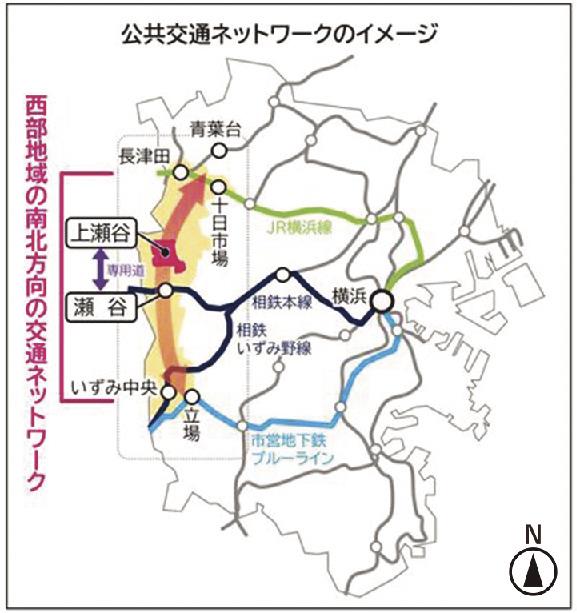Yokohama City to Build New Transportation Network in Western Area, Including Seya–Kamiseseya Transit System and New Expressway IC
September 24, 2025 – Construction & Planning
Yokohama City has announced plans to build a new transportation network for the western part of the city, which currently has areas underserved by public transport. The project targets a north–south axis connecting the municipal subway’s Tateba Station, Sotetsu Main Line’s Seya Station, and JR Yokohama Line’s Tokkaichiba Station.

Public Transportation Network Image
North-South Transportation Network in the Western Region
-
Nagatsuta
-
Kami-Seiya
-
Meikaido
-
Hamaya
-
Izumichuo
-
Tachiba
-
Aobadai
-
Tōkaichiba
-
Sagami Railway Main Line
-
Yokohama
-
Kobashihama Line (?)
-
Yokohama
-
Sotetsu (Sagami Railway)
-
Izumino Line
-
Municipal Subway
-
Blue Line
Notes:
-
"Kobashihama Line" is not a standard line name and might be a typo or an alternative name for another line (e.g., perhaps related to Odakyu Enoshima Line or a "Hama Line").
-
"Meikaido" and "Hamaya" are also not commonly recognized station names, so their exact locations are unclear.
-
The list seems to be a conceptual grouping rather than a geographically accurate sequence.
As part of the plan, the city will develop a new transit system between Seya Station and the former Kamiseseya Communication Facility site and open a new interchange (IC) on the Tomei Expressway. Both are scheduled to begin service in the early 2030s.
The network will leverage the existing infrastructure of the Kanjo 4 (Loop 4) road, build new bus-only routes, and add a new IC where Loop 4 crosses the Tomei Expressway. The target area, covering Aoba, Midori, Seya, and Izumi Wards along Loop 4, is home to more than 220,000 residents — about one-third of the population in the area.
Currently, four railway lines run in the area (Yokohama Municipal Subway, Sotetsu, and JR lines), but there is no continuous north–south axis connecting them. The city’s grand design for the network includes:
-
Integrating rail and bus networks
-
Establishing a sustainable local transport system
-
Promoting decarbonization through the introduction of environmentally advanced vehicles
Next-Generation Bus System with Underground Tunnel
The section between Seya Station and Kamiseseya will feature a next-generation bus system using autonomous driving and platooning technology. Near Seya Station, a shielded underground tunnel will be constructed to create a dedicated bus lane that avoids road congestion.
Project approval procedures will proceed in FY2026, with cost estimation and bidding to be carried out during the 2027 International Horticultural Expo (“Hanahaku”) between March and September. Construction is scheduled to begin in FY2028, with an estimated total project cost of about ¥46.6 billion.
New IC for Logistics and Disaster Response
The new IC will directly connect to a wide-area emergency response base and logistics zone within the former Kamiseseya site. This will improve wide-area accessibility and ease traffic congestion around the busy Yokohama-Machida IC and surrounding roads.
By linking directly with the Tomei Expressway, the city aims to promote the concentration of next-generation logistics hubs utilizing advanced technology. The cost for the new IC is estimated at around ¥36 billion.
In August, Mitsubishi Estate, Tokyu Land Corporation, and CRE announced plans to build the first next-generation core logistics facility in the Kanto region on the site. The project consists of two buildings with a combined floor area of about 700,000 m². Construction of the east building will begin after autumn 2027, with completion around 2030, while construction of the west building will begin around 2028 and finish around 2031.






